The beauty of working space technology

In recent days, a large number of photos and videos have appeared from launches of various rockets. I bring to your attention a selection, in my opinion, the most beautiful with comments.
Soyuz-FG
At the KDPV, a photograph of the super moon over the Baikonur cosmodrome, where the Soyuz FG launch vehicle with the Soyuz MS-03 spacecraft was preparing for launch (photo by NASA / Bill Ingalls). In dynamics, it looks even more impressive:
')
In the second half of the video around the rocket drive down farm maintenance. Light bulbs are not needed for their beauty - people will work there preparing the rocket for launch.
Photos from the launch of Bill Ingalls (NASA / Bill Ingalls) also turned out great. Soyuz uses liquid oxygen as an oxidizing agent; in this case, tank insulation is not necessary, but evaporating oxygen must be constantly released before starting. If you take a photo with a long exposure, you get a little surreal haze:
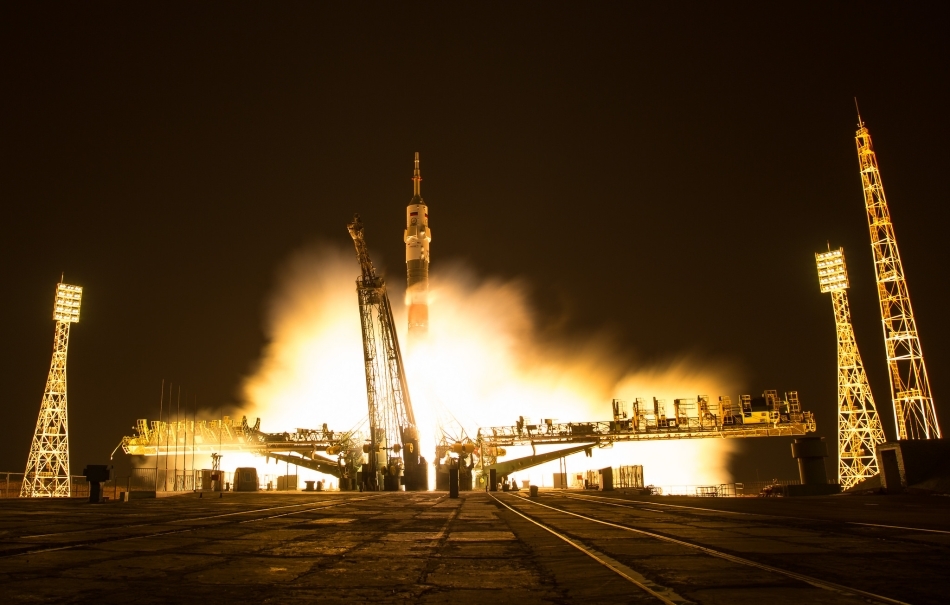
This is a high resolution photo.
The launch of the launch vehicle's engines is carried out in three stages, and the words “Preliminary, intermediate, main, recovery!” Have been heard at Baikonur for 69 years. In the first stages, kerosene does not burn completely, and you can catch a moment when there is a sea of fire under the rocket. It is not at all dangerous when the engines come to full draft, only the plume of flame behind the rocket’s tail will remain.
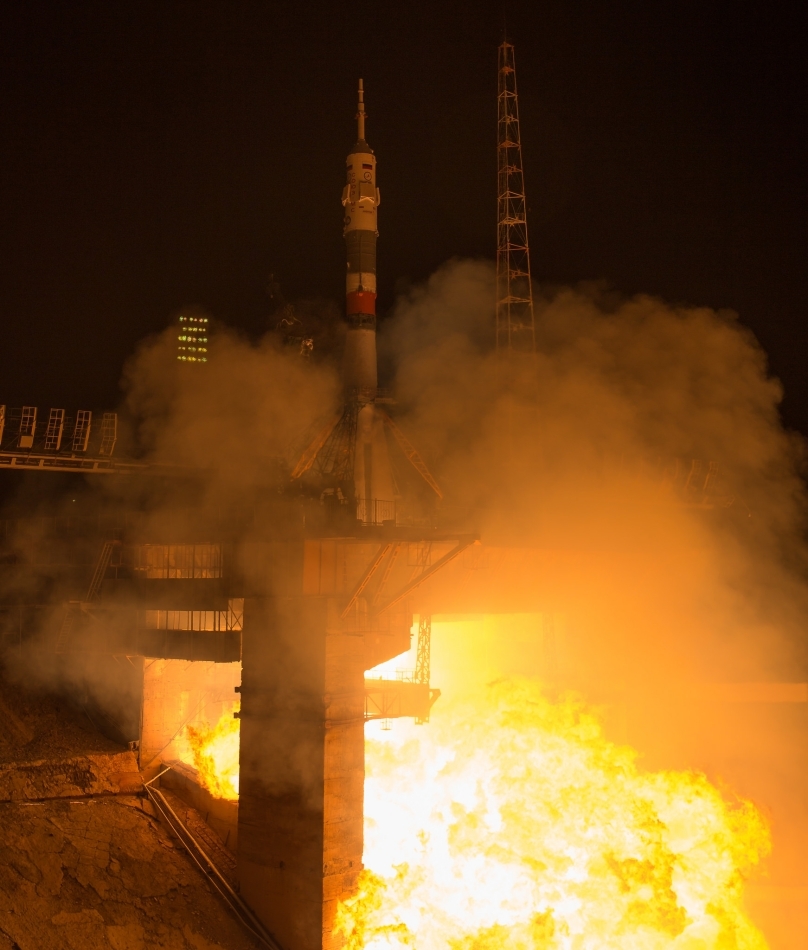
This is a high resolution photo.
With a long exposure, the tail of the flame seems small. The correct column - the rocket trail - shows the normal operation of the control system. If you look at the first seconds of the flight of the Soyuz rocket, you can sometimes see how it “waves” the steering engines, countering a gust of wind or other random disturbance. But the flight path will remain straight.
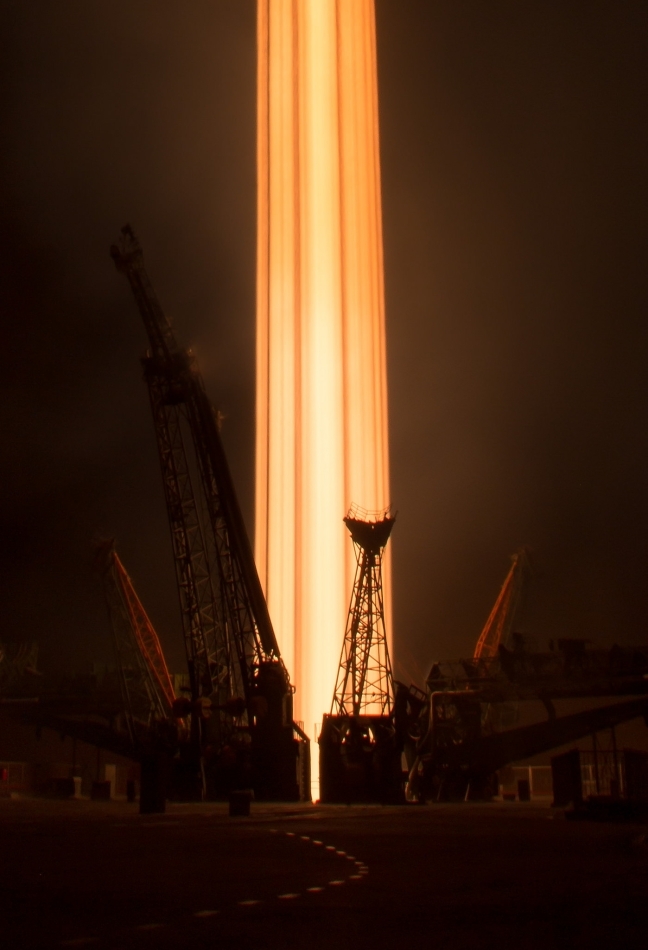
This is a high resolution photo.
Ariane v
On November 17, the seventy-fifth consecutive successful launch of the Ariane V launch vehicle with four Galileo navigation satellites took place. This time the rocket launched in a rare configuration, when instead of a cryogenic upper stage there was a block on high-boiling heptyl and amil on it. Poisonous, they have the advantage that they can be stored for a long time in tanks at room temperature without thermal insulation. The following photos belong to ESA / Stephane Corvaja ( source ).
This photo can be called the “Four Elements” - there is land in the frame (indirectly, in the form of launching facilities), water, air and fire. From the engineer’s point of view, a routine irrigation start operation is performed here to protect against acoustic and thermal loads.
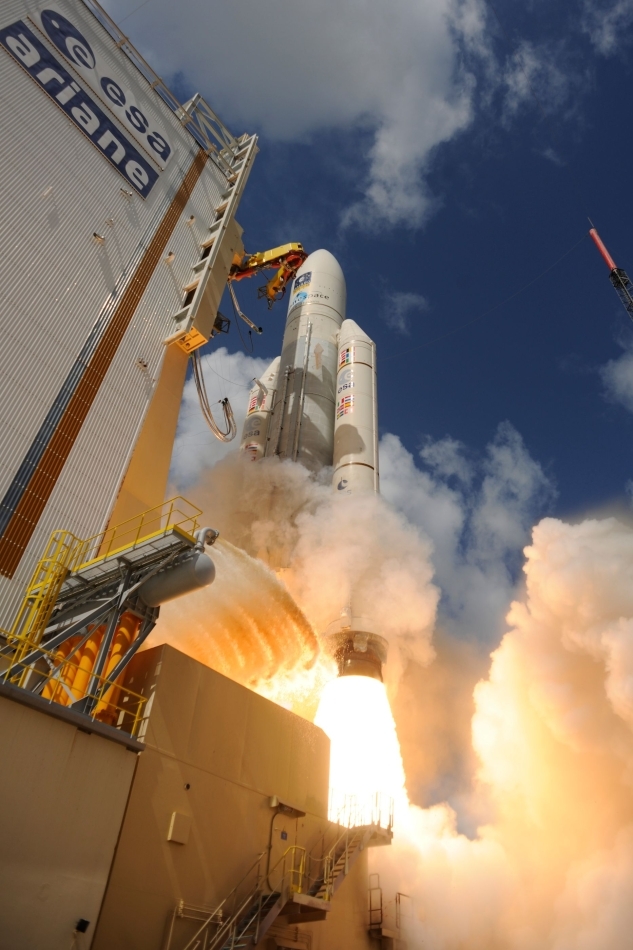
This is a high resolution photo.
The productivity of the irrigation system is estimated in cubic meters per second, and at the start a titanic battle of fire and water unfolds.
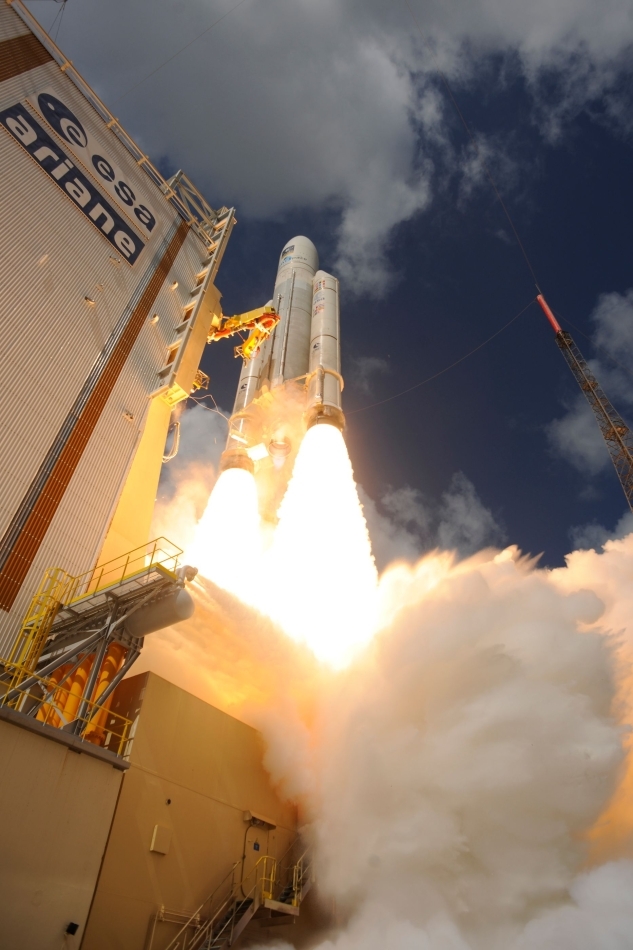
This is a high resolution photo.
And in this photo we can almost look inside the engine running. The central unit of the Ariane V is powered by a hydrogen / oxygen fuel pair, which produce an almost colorless flame. The side accelerators are solid, their flame is very bright, with a lot of smoke, but the inner surface of the nozzle is clearly visible in the engine running through the center of the engine. The balloons near the nozzle are the balloon-cylinders of the pressurization system of tanks, there is helium under high pressure.
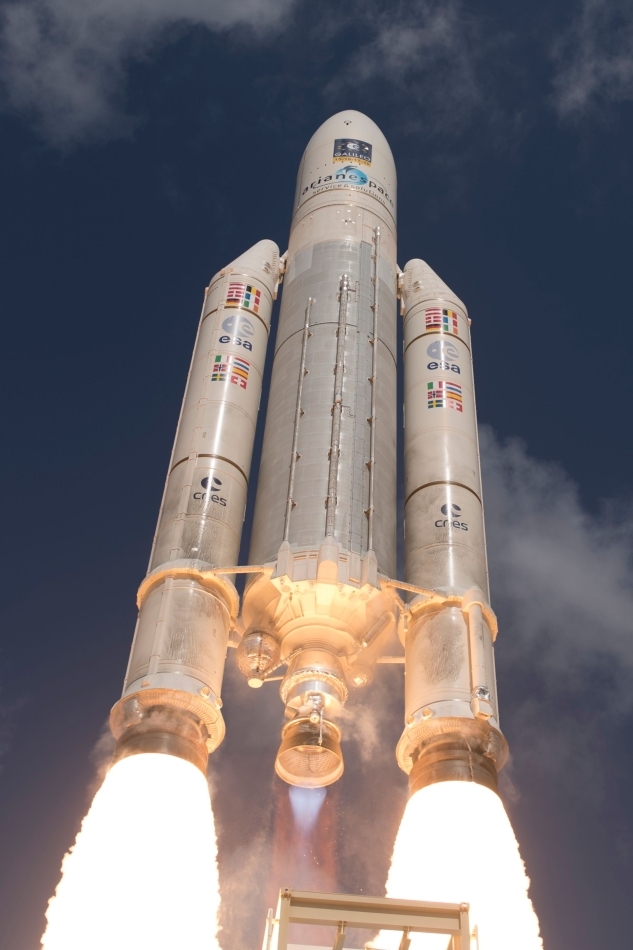
This is a high resolution photo.
Atlas v
On November 19, the Atlas V launch vehicle was launched with the GOES-R geostationary meteorological satellite. Then a photo of the United Launch Alliance ( source ).
Liquid oxygen without heat insulation is on the central unit, as well as on the Soyuz, so you can also see ice falling from the launching rocket here.
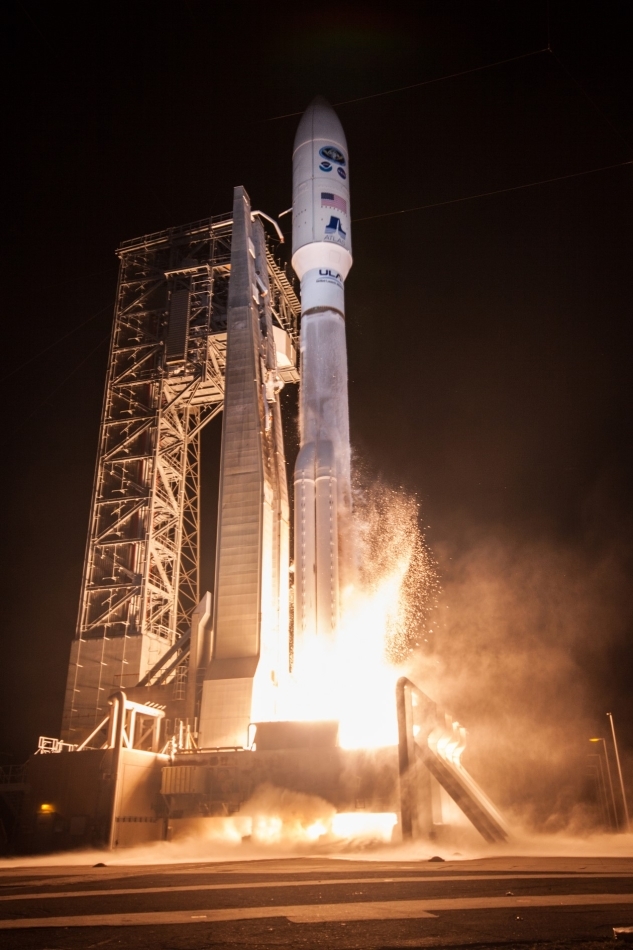
This is a high resolution photo.
The side accelerators are solid, and at night start beautiful white clouds look almost solid looking.
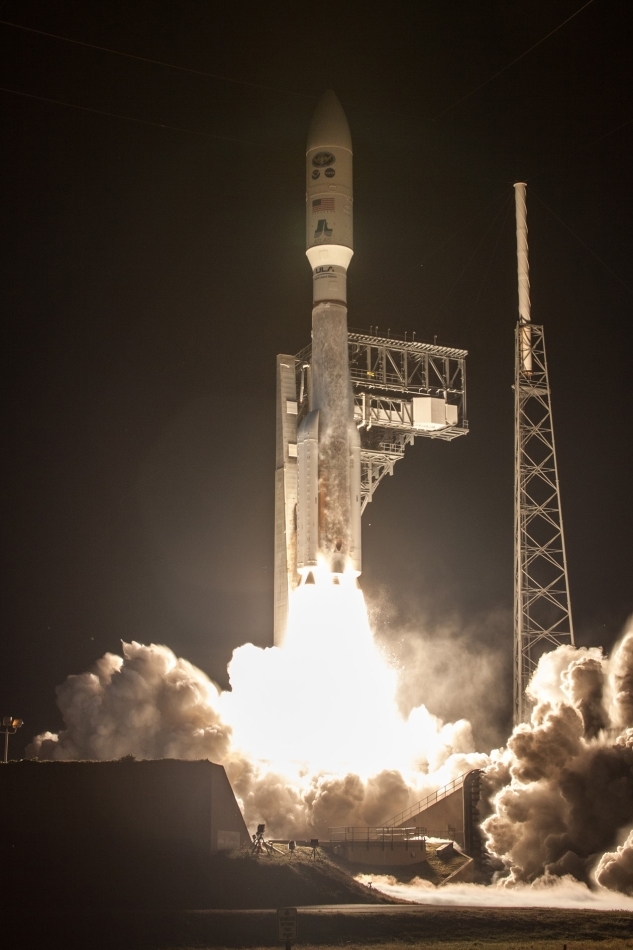
This is a high resolution photo.
And here are clearly visible ropes and masts of lightning rods that protect the start.
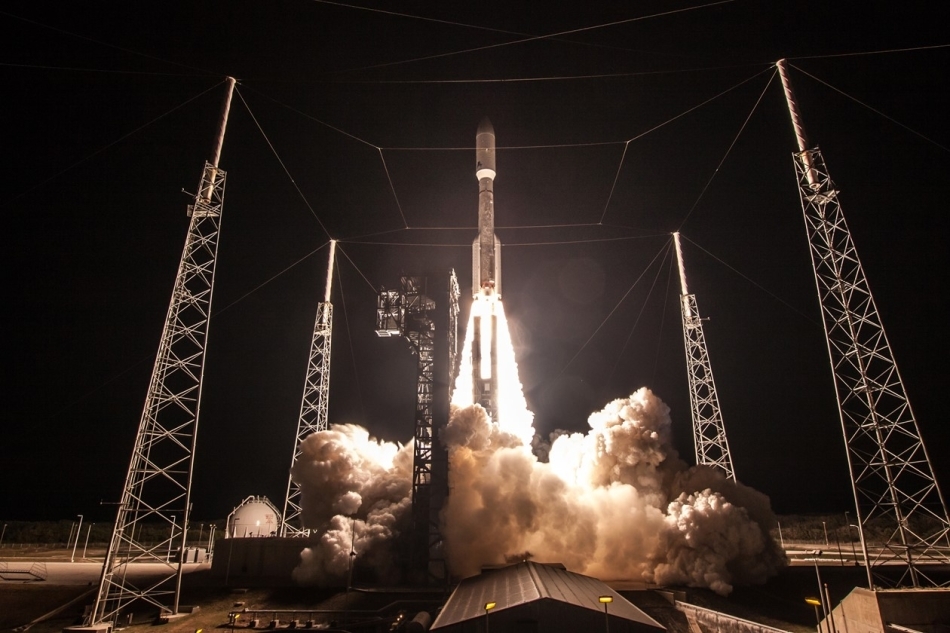
The rocket was equipped with advanced video cameras, so the frames for separating the satellite from the upper stage already away from the Earth, in a geo-transition orbit, were also very beautiful. Small particles on the video - banal ice. The Centaur accelerating unit works on liquid hydrogen and oxygen, there is thermal insulation, but still there are enough cold elements on which moisture from the atmosphere is deposited with ice before the start.
Source: https://habr.com/ru/post/372909/
All Articles